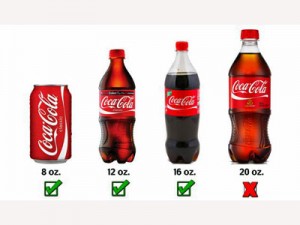 News stories about the problem of gun violence in America have dominated media outlets across the country over the past year. The tragic school shooting in Newtown, Connecticut continues to fuel an on-going debate about the laws surrounding violence and safety in our society. It’s a sensitive subject, and many people across the nation hold opposing viewpoints about what should be done. But one thing is clear: gun violence is a critical public health problem.
News stories about the problem of gun violence in America have dominated media outlets across the country over the past year. The tragic school shooting in Newtown, Connecticut continues to fuel an on-going debate about the laws surrounding violence and safety in our society. It’s a sensitive subject, and many people across the nation hold opposing viewpoints about what should be done. But one thing is clear: gun violence is a critical public health problem.
Gaps in evidence: Gun violence in America
The real evidence on prophylactic mastectomies
 When actress Angelina Jolie revealed last week in the New York Times that she had a double mastectomy to prevent breast cancer, media outlets across the country interviewed doctors, breast cancer patients, and generally added their two cents to the discussion about whether this type of surgery is worthwhile. [Read more…]
When actress Angelina Jolie revealed last week in the New York Times that she had a double mastectomy to prevent breast cancer, media outlets across the country interviewed doctors, breast cancer patients, and generally added their two cents to the discussion about whether this type of surgery is worthwhile. [Read more…]
Evidence-based sports: Are winning streaks real?
 Over the years, EBL readers have appreciated our occasional reports on scientific evidence on popular sports. Indeed, during Cornell’s epic run for the NCAA tournament, we reviewed very interesting research on the “hot hand” in basketball, one of our most viewed posts. We’ve also written about other factors that determine a team’s success and the science of the Olympics. [Read more…]
Over the years, EBL readers have appreciated our occasional reports on scientific evidence on popular sports. Indeed, during Cornell’s epic run for the NCAA tournament, we reviewed very interesting research on the “hot hand” in basketball, one of our most viewed posts. We’ve also written about other factors that determine a team’s success and the science of the Olympics. [Read more…]
In the media: Evidence-based mental health therapy?
The New York Times’ Well Blog has a fascinating post this week on why mental health therapists do not consistently use evidence-based techniques in treating their patients. [Read more…]
Debunking weight-loss myths
 As our nation continues to struggle with an obesity epidemic and individuals work to lose weight with diet and exercises programs, a group of researchers from University of Alabama at Birmingham want to make sure we know what not to do.
As our nation continues to struggle with an obesity epidemic and individuals work to lose weight with diet and exercises programs, a group of researchers from University of Alabama at Birmingham want to make sure we know what not to do.
In an article published earlier this year in the New England Journal of Medicine, obesity researchers reviewed the evidence about losing weight to identify what we really know about the best ways to lose weight.
They identified 7 commons myths about losing weight which are not true:
1. Small changes in diet and exercise will create big, long-term weight changes.
2. Setting realistic goals for weight loss is important to prevent frustration.
3. Rapid weight-loss is less successful over the long-term than gradual weight loss.
4. Patients who want to lose weight must be “mentally ready.”
5. Physical education classes play an important role in preventing childhood obesity.
6. Breastfeeding protects babies against obesity later.
7. Sexual activity is a good way to burn calories.
The review also identified some common perceptions about losing weight that are, in fact, supported by strong evidence:
- Genetics play a role in weight loss, but that factor is not insurmountable.
- Exercise helps people maintain their weight.
- Patients lose more weight on programs that provide meals.
- Some prescription drugs help with weight loss and maintenance.
- Weight-loss surgery is an effective way to maintain long-term weight loss and reduce mortality in appropriate patients.
The study also listed some ideas about weight loss that are still not proven or disproven by the current available evidence. For example, we don’t actually know whether eating breakfast regularly aids in weight loss, or whether people who snack often are more likely to gain weight.
In general, the medical community and researchers have praised the study for providing an accurate picture of what we know – and what we don’t – about losing weight. The idea going forward is that researchers should continue to develop new evidence on the most effective methods for losing weight.
The evidence on super-sized soft drinks
 Next year, New York City residents must say good-bye to their super-sized sodas and Double Big Gulps. Beginning in March, the city will limit to 16 ounces the size of soft drinks sold at restaurants, street carts, movie theaters and sporting venues. The New York City Board of Health passed the proposal last month in an effort to reduce the consumption of sugary drinks thought to contribute to the nation’s obesity epidemic.
Next year, New York City residents must say good-bye to their super-sized sodas and Double Big Gulps. Beginning in March, the city will limit to 16 ounces the size of soft drinks sold at restaurants, street carts, movie theaters and sporting venues. The New York City Board of Health passed the proposal last month in an effort to reduce the consumption of sugary drinks thought to contribute to the nation’s obesity epidemic.
But what evidence do we have about sugary soft drinks and weight gain and harm our health? We know that sugar-sweetened drinks account for nearly half of the total added sugars Americans consume and 7 percent of our total calories. But what impact does that have on our health?
New York Times writer Jane Brody also provides an overview of some of the evidence on this topic in her column this week. There are also several systematic reviews that tell the story:
- A 2007 meta analysis in the American Journal of Public Health reviewed 88 studies that examined the association between soft drink consumption and nutrition and health outcomes. The analysis found consuming soft drinks led to increased energy intake and body weight, and was associated with lower intakes of milk, calcium, and other nutrients. It also found an association between soda intake and diabetes.
- Another systematic review, published in the American Journal of Clinical Nutrition in 2006 – which included 30 cross-sectional, prospective and experimental studies looking at the relationship between sugary soft drink consumption and weight gain – concluded that sugary soft drinks are associated with weight gain and obesity.
- A third review published in Cambridge University’s Nutrition Research Reviews in 2008 came up with inconclusive results. The review examined 44 epidemiological studies and interventions and six meta-analyses – all looking at the relationship between sugary soda consumption and obesity. The author concluded that while sugary soft drinks are a source of calories, there is little evidence that they cause more weight gain than other sources of calories. He said the impact of sugary sodas on weight gains depends on variables including how much soda is consumed each day and the formulation of the specific drink. His review also concluded that consuming large amounts of sugary soft drinks on a daily basis is most directly associated with weight gain.
So, did the New York City Board of Health make an evidence-based decision in limiting sugary soft drink sizes? I think the answer is yes. While there is some mixed data on the association of soft drink consumption and weight gain, the evidence makes it abundantly clear that consuming large amounts of soda is the major problem. By limiting soft drinks sizes, the City is essential legislating the old adage, “Moderation in all things.”
The science of political campaigns, Part 2
 Next month, President Barack Obama and Republican Presidential Candidate Mitt Romney will face off on national television on four separate occasions to share their ideas for governing America and explain why voters should chose them.
Next month, President Barack Obama and Republican Presidential Candidate Mitt Romney will face off on national television on four separate occasions to share their ideas for governing America and explain why voters should chose them.
While it’s not clear how many Americans make their voting decisions based on the debates, we do know they are an important part of the campaign. So I was thrilled to find some evidence on how to consider the candidates responses critically.
Todd Rogers, a behavioral psychologist at Harvard University, is among a growing group of researchers applying social science to issues effecting political campaigns. (We’ve written about his work on get-out-the-vote phone calls.) He wanted to address the issue of how candidates respond when get asked a question that they don’t want to answer – and whether the public notices when politicians dodge a question by talking about a different topic instead.
Rogers and his colleague Michael Norton, an associate professor at the Harvard Business School, designed a study to determine under what conditions people can get away with dodging a question, and under what conditions listeners can detect what’s happening.
In their study, published in the Journal of Experimental Psychology, they recorded a speaker answering a question about universal healthcare. Then they paired that answer with three separate questions: the correction question about health care, one about illegal drug use and another about terrorism. They showed the three question-and-answer pairings to separate groups of people and asked them to rate the truthfulness of the speaker.
Their research found that when the question and answer sounded somewhat similar – such as in the case where the speaker was asked about drug use but responded about healthcare – the audience rate the speaker as trustworthy. (In fact, most of the people who head the answer about illegal drug use couldn’t even remember the question.) But when the answer was very clearly addressing a different topic – such as when the speaker was asked about health care but responded about terrorism – the audience detected the dodge.
In another part of the study, Rogers and Norton used the same questions and answers, but posted the question on the screen in for some viewers. They found viewers who saw the question posted on the screen while the speaker answered were more than twice as likely to detect a dodge, even in subtle cases.
Rogers advocates for posting the questions on the screen during the presidential candidates debates, although he concedes it’s unlikely to happen this year.
You can hear an interview with Rogers and learn about other research on political campaigning in last week’s episode of NPR’s Science Friday.
Is organic food really better for you?
 Over the past decade, our society is growing increasingly aware of our reliance on chemical products and their impacts on the environment and our health. So last week, a new study by Stanford University researchers on the benefits of organic foods received a lot of media coverage.
Over the past decade, our society is growing increasingly aware of our reliance on chemical products and their impacts on the environment and our health. So last week, a new study by Stanford University researchers on the benefits of organic foods received a lot of media coverage.
The systematic review, published in the Annals of Internal Medicine, examined 240 studies organic and non-organic fruits, vegetables, grains, meat, poultry eggs and milk — 17 studies of humans and 223 studies of nutrient and contaminant levels.
It found that more one-third of conventional produce had detectable pesticide residues, compared with 7 percent of organic produce samples. And it found organic meats were one-third less likely to carry bacteria resistant to antibiotics than conventionally produced meat.
But the study also found that organic foods, on the whole, don’t contain any more vitamins or nutrients than conventional foods.
It’s good to have a wide-ranging review of organic foods. Even more interesting is the media coverage of the study. Some new stories, like this one from the Guardian, have focused on the lack of a difference in nutrient levels. Other news coverage has pointed out that the purpose of purchasing organic foods is to avoid pesticide use because of its impact on human health and the environment.
The bottom line: it’s important to understand all of the findings in a study. Sometimes, that requires looking past the headlines in media outlets so that you can get the full story.
Football frets: The evidence on repetitive head injuries
 With football season underway, many Americans are spending their weekends cheering on their favorite teams at stadiums and tuning in to watch televised games. Personally, I enjoy following my college football team. But I always feel a sense of dread when a player takes an especially hard hit.
With football season underway, many Americans are spending their weekends cheering on their favorite teams at stadiums and tuning in to watch televised games. Personally, I enjoy following my college football team. But I always feel a sense of dread when a player takes an especially hard hit.
It turns out, those repeated hits add up to some real neurological problems for football players.
A study published this week in the journal Neurology followed nearly 3,500 football players who played at least five seasons in the N.F.L. from 1959 to 1988.
Over the course of the study, 334 of the players died. When researchers from the National Institute of Occupational Safety and Health reviewed their death certificates, they found Alzheimer’s disease was an factor in seven of the deaths and Lou Gehrig’s disease was a factor in seven others. These rates are more than three times what you would expect to see in the normal population.
This new study is part of a growing body of research on the neurological repercussions of repeated head injuries. Another study published earlier this year found repetitive head impacts over the course of a single season may negatively impact learning in some collegiate athletes.
And a center at the Boston University School of Medicine has documented evidence of a condition called Chronic Traumatic Encephalopathy, or CTW, a progressive degenerative disease of the brain found in people with a history of repetitive brain trauma.
The N.F.L. is investing in more research. This week, the organization donated $30 million to the National Institutes of Health for research on the connection between brain injuries and long-term disorders. That’s a good thing, because this is one topic we need more evidence on.
Evidence-based Olympics, Part II: The facts on fitness products
 We’ve all seen the advertisements of the sweaty, exhausted athlete pausing to take a sip of a brightly-colored drink and then going on to score the winning goal or set a personal record. Magazines and web sites – especially in these days when Olympic athletes dominate the news – are filled with fitness products that supposedly make you perform better or recovery more quickly. But are any of those claims true?
We’ve all seen the advertisements of the sweaty, exhausted athlete pausing to take a sip of a brightly-colored drink and then going on to score the winning goal or set a personal record. Magazines and web sites – especially in these days when Olympic athletes dominate the news – are filled with fitness products that supposedly make you perform better or recovery more quickly. But are any of those claims true?
A group of researchers at the University of Oxford set out to answer that exact question. They analyzed magazine advertisements and web sites of 104 different fitness products looking for real evidence behind their claims. Then they wrote to manufacturers of fitness products asking for references to research that backed up their claims.
But their study did not find much credible evidence. More than half of the web sites they reviewed did not provide any references. They did find a total of 146 specific references to study, but they were only able to find 76 studies to review.
None of the studies they found were systematic reviews. Eighty-four percent were judged to be of high risk-bias, and only 58 percent used randomization. In total, only three of the studies were judged to be high quality.
The study was thoroughly reported on in the New York Times, along with responses from beverage manufacturers and from health and nutrition experts not involved in the study.
Politics aside, there is a clear lack of evidence about whether performance-enhancing products really work.
Evidence-based Olympics: The science of sport
 Much of the world is watching the 2012 Olympics with excitement as athletes attempt to swim faster, jump higher and dive more gracefully than humans ever have before. The casual spectator might be surprised at the amount of science that goes into competition at the Olympic level.
Much of the world is watching the 2012 Olympics with excitement as athletes attempt to swim faster, jump higher and dive more gracefully than humans ever have before. The casual spectator might be surprised at the amount of science that goes into competition at the Olympic level.
Here at EBL, we tracked down a round-up of media on scientists working with Olympic athletes to help them become the best they can be.
Among the interesting research is a study trying to determine the most efficient freestyle stroke technique for swimmers. A mechanical engineering professor at John Hopkins University used laser body scans and underwater video of two Olympic-level swimmers to create a computational fluid dynamic model to compare the two different freestyle strokes. His work determined that a method known as the “deep-thrust” swimming style is the most effective way to swim freestyle.
Another professor of biomedical engineering at the University of California is using physics to help elite divers. She installed force sensors on diving platforms to measure the forces divers use when they begin their dives. “The athletes feel the forces and the coaches see the effect of the forces,” Professor Jill L. McNitt-Gray explained. “By measuring forces, they could both get a sense of what they actually are.”
And a mechanical engineer at Sheffield Hallam University in the United Kingdom studies the role technology has played in the history of sport. He’s written extensively this year on the effects of rule changes and technology on sporting performance over time.
Certainly, there are many more examples of science in sport such as aerodynamic helmets used in cycling and the biological effects of endurance sports, to name two.
When it comes down to individual competitions, luck and human spirit certainly do play a role – especially at the Olympics. But it’s interesting to take a look behind the scenes to see the role that science plays as well.
The science of political campaigns
 The 2012 presidential candidates will spend billions of dollars to encourage people to vote for them this year. Independent analysts currently estimate that President Barack Obama and Republican nominee Mitt Romney will spend more than $6 billion in their campaigns. But how do they really know that money will bring them votes?
The 2012 presidential candidates will spend billions of dollars to encourage people to vote for them this year. Independent analysts currently estimate that President Barack Obama and Republican nominee Mitt Romney will spend more than $6 billion in their campaigns. But how do they really know that money will bring them votes?
It turns out there is an emerging cadre of researchers using scientific techniques – specifically the randomized controlled trial – to find out which campaign strategies actually bring people to the polls.
Among them are Todd Rogers, a behavioral psychologist at Harvard University, and David Nickerson, a political science professor at the University of Notre Dame. Together, they conducted a study in the 2008 Democratic primary in Pennsylvania that attempted to determine whether get-out-the-vote reminder calls made a significant difference in voter turnout.
For the study, Rogers came up with some questions that would ask people about their plans on voting day such as “What do you think you’ll be doing before you head to the polls on Tuesday?” and “Where do you think you’ll be coming from that day?” His theory – based cognitive psychology principles – was that these questions would plant a seed voters’ minds to helps them remember to vote.
The researchers used the questions in a randomized controlled trial. Some citizens received phone calls asking the questions, others received the standard get-out-the-vote call and others did not receive a phone call. They found a dramatic result: People who were asked the planning questions were twice as likely to vote as people who were not.
There are other examples of scientific studies applied to campaign strategies. Rogers and a colleague at Yale University found evidence that messages which tell people high turnout is expected are more effective at motivating voters than messages which emphasize low voter turnout.
And a review of field studies in get-out-the-vote campaigns found that many of these strategies improve voter turnout, but tend to mobilize well-represented groups of people and miss under-represented groups – effectively widening disparities in the electorate.
Here at EBL, we think it is great news that social scientists are applying scientific methods to the art of political campaigning – especially where so much money is involved. And we hope it’s information that candidates use in their campaigns.


